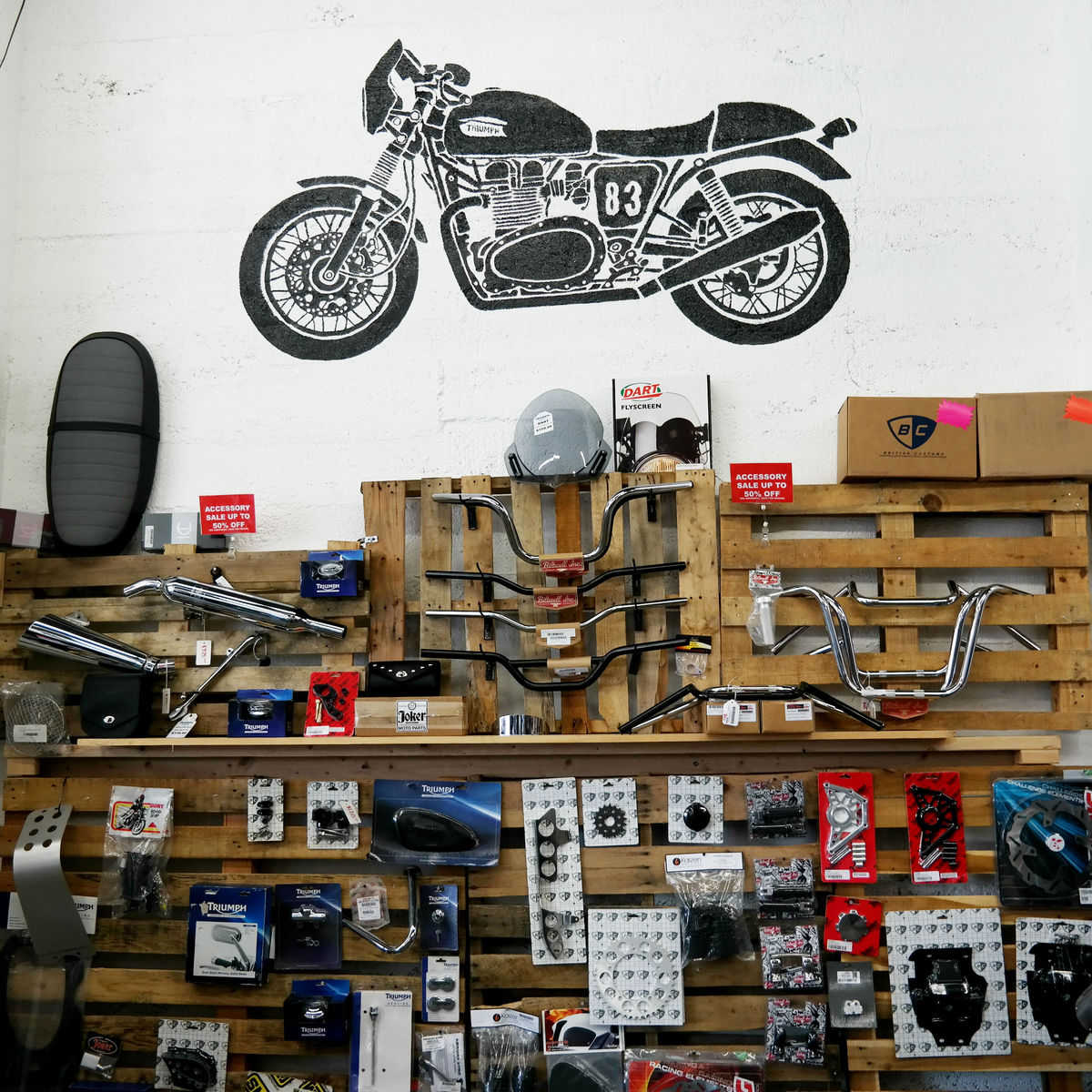Visit Our Motorcycle Shop for Specialist Guidance and Top Quality Products
Grasping Motorbike Gears: How to Optimize Your Riding Experience
In the realm of motorcycling, mastering the art of equipment adjustment is important for enhancing your riding performance. Appropriately recognizing and utilizing motorcycle gears can significantly affect control, velocity, and gas efficiency, changing an ordinary experience into a seamless, thrilling journey.
Comprehending Equipment Mechanics
At the core of bike dynamics, gear auto mechanics play a pivotal role in converting engine power right into activity, eventually dictating speed and control. The equipment ratios, meticulously created, establish the relationship between engine changes and wheel turns, affecting acceleration and gas efficiency.
Understanding equipment technicians begins with identifying the value of the gearbox, which houses several equipments of varying sizes. These equipments connect with a procedure recognized as meshing, where teeth of various equipments engage to transmit power.
In addition, the idea of equipment changing is essential to taking full advantage of performance. Smooth and prompt shifts make sure that the engine runs within its optimal power band, protecting against unneeded stress and enhancing longevity (motocross gear). By comprehending these mechanical intricacies, bikers can achieve a harmonious mix of control, power, and effectiveness, boosting their riding experience
Timing Your Changes
Change timing proficiency is essential for maximizing motorcycle efficiency and boosting the riding experience. Appropriately timed shifts make certain that the engine operates within its ideal power band, which is essential for maintaining control, accomplishing smooth acceleration, and ensuring the durability of the motorbike. Cyclists should create an user-friendly feeling of when to move gears, which includes understanding the relationship in between engine transformations per min (RPM) and rate.
To understand change timing, pay very close attention to the engine's sound and feel, as these give crucial ideas concerning when to change equipments. When the engine comes close to the top variety of its power band without reaching the redline, the excellent shift factor usually happens - motocross parts nz. Changing prematurely can result in a lack of power, while shifting far too late may trigger unneeded engine strain
Furthermore, roadway problems and riding design impact shift timing. For circumstances, in city settings, smoother and much more regular shifts might be necessary to navigate website traffic successfully. On the other hand, during freeway riding, less changes at higher speeds can be more proper. Practicing in different settings will certainly improve your capacity to time shifts specifically, eventually elevating your riding experience to a specialist degree.
Enhancing Fuel Efficiency
While grasping bike gears is critical for efficiency, enhancing gas performance is equally crucial for both financial and environmental factors. Ideal fuel intake not just decreases operational costs however additionally minimizes the environmental footprint of riding. To attain this, one have to recognize the detailed relationship in between gear selection and engine efficiency.
Riding in a higher gear at lower rates can lead to engine carrying, which is damaging to both gas economy motorcycle helmets and engine wellness. Alternatively, riding in reduced equipments at high speeds results in unneeded gas intake.
Additionally, routine maintenance plays a pivotal function in gas efficiency. Guaranteeing that the motorbike is well-tuned, with tidy air filters and effectively blew up tires, can lower and improve the rules of aerodynamics fuel waste. Taking on a riding style that accepts steady velocity and smooth slowdown can contribute to better fuel economic climate.

Methods for Smooth Transitions
Accomplishing smooth equipment transitions is basic to enhancing the riding experience and ensuring the longevity of a bike's transmission system. Proper equipment shifting not just adds to a seamless ride yet also lessens damage on the mechanical elements. To understand the art of smooth transitions, motorcyclists should concentrate on a few essential techniques.

Secondly, clutch control plays a critical function. Involving and disengaging the clutch efficiently requires practice. The clutch lever should be launched gradually, enabling a seamless transfer of power from the engine to the wheels without creating a jolt or abrupt movement.

Adapting to Roadway Problems
Navigating varied roadway problems is a critical ability for any motorcyclist aiming to keep control and safety. Whether you're riding on damp surface areas, crushed rock roads, or browsing sharp turns, your capacity to adapt your equipment usage and riding method is vital. Recognizing how to change your gears appropriately can considerably affect grip and security, ensuring a more secure journey.
In contrast, when riding on crushed rock or irregular terrain, reduced equipments are preferable. Reduced equipments provide far better control and allow you to react more promptly to unforeseen changes in the roadway surface area.
Sharp contours require specific equipment management to stabilize rate and control. Downshifting before entering a curve can assist preserve energy while making sure the motorcycle stays secure throughout the turn. Consistent technique in varied conditions improves your capacity to forecast and react to changes in roadway texture and slope.
Final Thought
Understanding motorcycle gears dramatically boosts the riding experience by improving control, fuel, and velocity efficiency. A detailed understanding of gear mechanics and additional info accurate shift timing guarantees the engine runs within its optimum power band, while smooth shifts with reliable clutch and throttle sychronisation boost convenience and efficiency. Adapting equipment selection to numerous road conditions, such as using greater gears on wet surfaces and lower gears on crushed rock, additional enhances handling and safety. Inevitably, these abilities elevate the general trip.
Understanding gear technicians starts with acknowledging the value of the gearbox, which houses multiple gears of varying sizes. These equipments connect through a process understood as meshing, where teeth of various gears involve to send power (motorcycle shop). Mild changes to the throttle throughout equipment shifts can protect against jerky motions and preserve a consistent Going Here riding rate
Whether you're riding on damp surfaces, gravel roads, or navigating sharp turns, your ability to adapt your gear use and riding method is vital. Adapting gear option to different roadway problems, such as using greater gears on damp surfaces and reduced equipments on crushed rock, more boosts handling and safety and security.